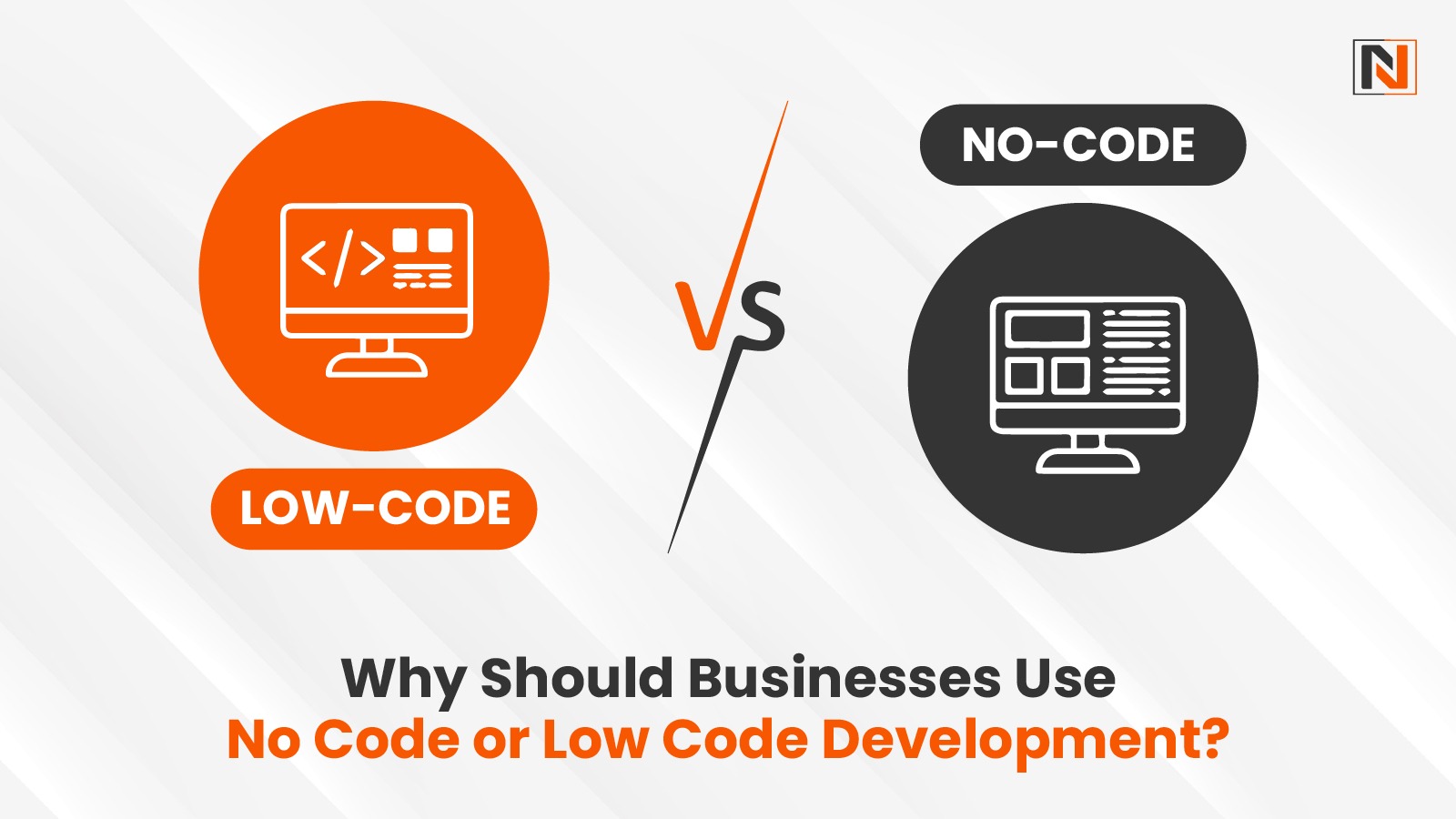
What if you could turn your best ideas into functional apps without waiting months for a developer or blowing your budget? That’s the promise of low-code development and no-code platforms. These game-changing tools empower businesses to build custom software faster, cheaper, and with far less technical hassle.
But how do they work? Who should use them? And most importantly, could skipping traditional coding be the competitive edge your business needs? Let’s explore why forward-thinking companies are making the shift.
What Are No-Code and Low-Code Platforms?
Before diving into their advantages, let’s clarify the distinction between the two:
No-code development allows users to build applications without writing a single line of code. These platforms use drag-and-drop interfaces, pre-built templates, and visual workflows, making them ideal for non-technical users.
- Low-code development requires some coding but significantly reduces the amount needed. Developers can use pre-built modules and automate repetitive tasks, speeding up the development process while still allowing customization.
- Both approaches accelerate rapid app development, but they cater to slightly different audiences, no-code for business users and low-code for professional developers seeking efficiency.
The Business Case for No-Code and Low-Code Development
As businesses face increasing pressure to innovate faster and do more with less, no-code and low-code platforms emerge as powerful solutions – delivering speed, cost efficiency, and agility without sacrificing functionality.

1. Speed to Market
In traditional development, building an app can take months, sometimes years. With low-code and no-code platforms, businesses can develop and deploy applications in days or weeks. This agility is crucial for:
- Launching MVPs (Minimum Viable Products) quickly
- Responding to market changes faster
- Testing new ideas without heavy investment
For example, a retail company can use a no-code tool to build a customer feedback app in a week instead of waiting months for an IT team to develop one.
2. Cost Efficiency
Hiring skilled developers is expensive. No-code and low-code solutions reduce dependency on specialized talent, allowing employees across departments (marketing, HR, operations) to create their own tools. This leads to:
- Lower development costs
- Reduced IT backlog
- More efficient resource allocation
3. Empowering Citizen Developers
Not every great idea should wait for IT approval. No-code platforms enable “citizen developers” and non-technical employees to build solutions tailored to their needs. This fosters innovation at all levels of the organization.
4. Seamless Digital Transformation
Many companies struggle with digital transformation due to legacy systems and slow processes. Low-code development bridges this gap by:
- Integrating with existing enterprise systems (ERP, CRM)
- Modernizing outdated workflows without full system overhauls
- Enabling continuous improvement through iterative development
5. Scalability and Flexibility
Contrary to misconceptions, no-code and low-code platforms are not just for simple apps. Many support enterprise-grade scalability, allowing businesses to:
- Start small and expand functionality as needed
- Handle increasing user loads with cloud-based solutions
- Customize applications as business needs evolve
Low-Code vs No-Code: Which One Should You Choose?
While both accelerate development, the choice depends on your needs:
| Factor | No-Code | Low-Code |
| User Expertise | Business users, non-developers | Developers, IT teams |
| Customization | Limited (pre-built logic) | High (can add custom code) |
| Use Case | Simple apps, workflows, automation | Complex enterprise applications |
| Speed | Fastest (drag-and-drop) | Fast (but may require some coding) |
For example:
- A marketing team might use a no-code tool like Bubble or Glide to create a campaign tracker.
- An IT department might use a low-code platform like OutSystems or Mendix to build a custom CRM integration.
DID YOU KNOW?
The low-code platform market is projected to reach around $65 billion by 2027 on a global scale.
Real-World Use Cases
From automating internal workflows to building customer-facing apps, businesses across industries are leveraging no-code and low-code solutions to solve real challenges and drive measurable results. Here are some powerful examples:
1. Internal Process Automation
- HR departments use no-code tools to automate employee onboarding.
- Operations teams build inventory management apps without IT help.
2. Customer-Facing Applications
- Banks deploy low-code solutions to create self-service portals.
- E-commerce businesses use no-code platforms to launch loyalty apps quickly.
3. Legacy System Modernization
- Enterprises use low-code development to connect old ERP systems with modern cloud apps.
4. Rapid Prototyping
- Startups validate ideas with no-code MVPs before investing in full-scale development.
Overcoming Common Misconceptions
Despite their growing adoption, myths about no-code and low-code development persist, let’s debunk the top three holding businesses back from embracing their full potential.
Myth 1: “No-code and low-code are only for small apps.”
Reality: Many enterprises use these platforms for mission-critical applications.
Myth 2: “They replace developers.”
Reality: They augment developers, freeing them to focus on complex tasks.
Myth 3: “They lack security.”
Reality: Leading platforms comply with enterprise security standards (SOC 2, GDPR).
The Future of No-Code and Low-Code
As AI and automation advance, these platforms will become even more powerful. Expect:
- AI-assisted development (auto-generating workflows)
- Tighter enterprise integrations
- More industry-specific templates
Businesses that adopt no-code and low-code development today will lead tomorrow’s innovation race.
Conclusion
The rise of no-code and low-code development is a fundamental shift in how businesses build software. Whether you’re a startup looking to move fast or an enterprise undergoing digital transformation, these platforms offer:
- Unmatched speed in rapid app development
- Cost savings by reducing IT bottlenecks
- Empowerment for non-technical teams
- Scalability for long-term growth
Is your business ready to embrace the future of development?